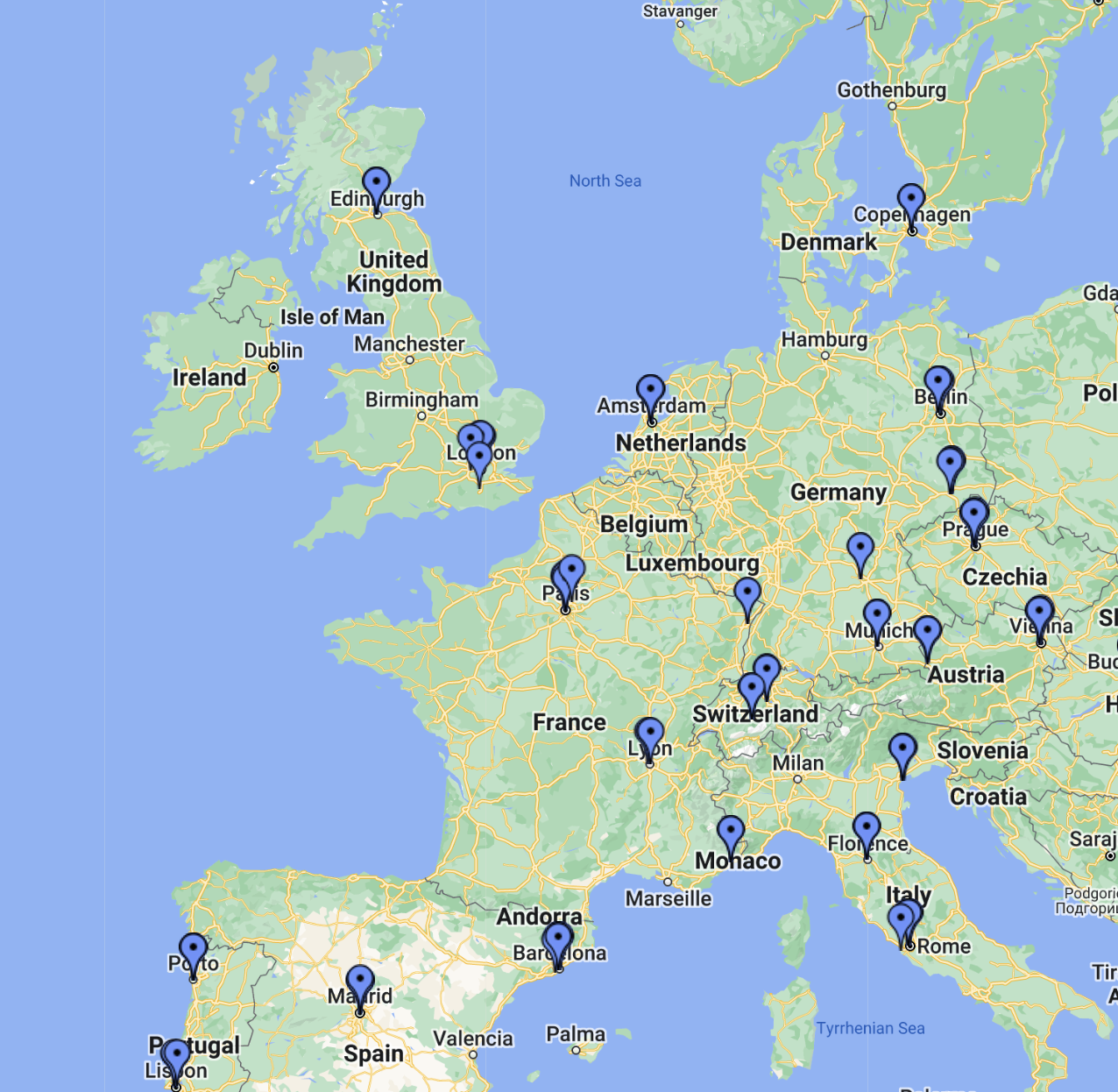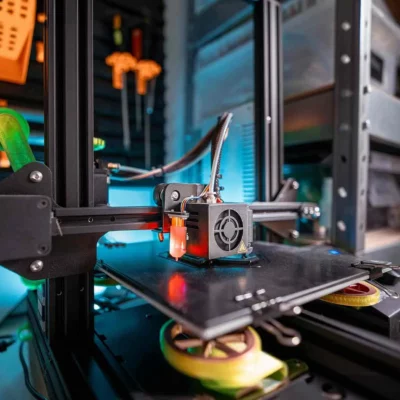Buying automation equipment involves many stakeholders, each with their own goals and concerns. Without proper management, the process can become chaotic—miscommunication, missed deadlines, and unexpected costs can arise. You’ll need to coordinate with internal teams, suppliers, and other partners to ensure everything runs smoothly. Frequent changes in contacts and information scattered across emails, calls, and messages can complicate things further. By effectively managing stakeholders, you can streamline communication, avoid costly mistakes, and keep your project on track.
In this guide, we’ll explore practical strategies to help you handle stakeholder relationships and make informed purchasing decisions.
Identifying Key Stakeholders in Automation Equipment Purchases:
When buying automation equipment, it’s important to know who your key stakeholders are. Getting everyone involved early can prevent delays and costly mistakes. Here’s who you should focus on:
Internal Stakeholders:
Project Managers:
You need a project manager to keep your automation purchase on track. They coordinate tasks, set deadlines, and ensure everyone stays informed. Without their guidance, things can quickly become disorganized, leading to missed deadlines and unexpected costs. They also act as the main point of contact, making sure all stakeholders are aligned and working towards the same goal. With their support, you can focus on making the right buying decisions without getting overwhelmed by the details.
Department Heads:
Department heads help you make sure the new equipment fits your company’s goals and operations. Their input ensures the automation solution meets performance expectations and integrates well with existing processes. You’ll need their approval to move forward, as they oversee budgets, policies, and compliance. They also help identify potential challenges, such as training needs and workflow changes, ensuring a smooth transition for your team. By involving department heads early, you can avoid last-minute roadblocks and get the support needed to implement automation successfully.
End-Users/Operators:
These are the people who will use the equipment every day. Their feedback helps you choose a solution that’s practical and easy to use. Involving them early ensures the equipment meets their needs and fits smoothly into daily operations. Their input can also help identify potential challenges before they become costly problems.
Procurement and Finance Teams:
Your procurement and finance teams are essential to making sure your automation equipment purchase stays on budget and delivers value. They help you find the right suppliers, negotiate better deals, and ensure compliance with company policies and industry regulations. Procurement teams focus on getting the best price and terms, while finance teams assess the full cost of ownership, including maintenance, training, and long-term expenses. Involving them early helps you avoid financial surprises and make informed decisions. Their expertise ensures you get the most out of your investment while keeping spending under control.
External Stakeholders:
When purchasing automation equipment, engaging with external stakeholders is crucial for a successful outcome. Here’s how each group plays a vital role:
Suppliers and Vendors:
Building strong relationships with your suppliers and vendors can lead to better negotiation terms, improved quality, and timely deliveries. While specific statistics may vary, it’s widely recognized that effective supplier relationship management contributes to cost savings and operational efficiencies. For instance, Deloitte highlights that organizations adopting integrated approaches can achieve significant cost reductions and performance improvements. [1]
Regulatory Bodies:
Compliance with industry regulations is essential to avoid legal issues and operational disruptions. Adhering to standards like ISO 27001:2022 helps organizations strengthen their information security posture, ensuring business continuity and building brand trust. [2]
Technical Support and Maintenance Providers:
After installation, reliable technical support and maintenance are vital to minimize downtime and maintain productivity. Choosing the right providers ensures that your equipment operates efficiently, reducing the risk of operational delays.
By understanding and involving these external stakeholders from the beginning, you can enhance communication, expedite the purchasing process, and ensure a successful automation investment.
Challenges in Stakeholder Management:
When buying automation equipment, managing different stakeholders can be tough. If you don’t plan properly, communication gaps, staff changes, and conflicting goals can slow down your project. Here are the main challenges you might face:
Communication Complexities:
You’ll need to deal with emails, phone calls, and messages from different people. If communication isn’t organized, important details can get lost. According to the Project Management Institute (PMI), 52% of project failures are caused by poor communication. [3] To avoid confusion, centralizing communication is key.
Stakeholder Turnover:
People in key roles may leave or change jobs during your project. When this happens, you might lose important knowledge, and progress can slow down. Without a plan, tasks can get delayed, and your team may struggle to keep things moving. You need to document everything clearly—decisions, responsibilities, and key contacts—so new team members can quickly catch up. Regular updates and clear communication will help everyone stay aligned. Encourage knowledge sharing among your team to avoid relying too much on a single person. With the right preparation, you can handle staff changes without disrupting your project’s success.
Diverse Objectives and Priorities:
Your stakeholders have different priorities—your finance team focuses on cost savings, while your operators need ease of use and reliability. These differences can cause misalignment, which is a major reason projects fail. In fact, 37% of project failures happen due to unclear goals and objectives, according to the PMI Pulse of the Profession report (PMI). [3] To avoid this, you need to align expectations early by holding regular check-ins, clearly documenting goals, and encouraging open discussions. This helps ensure everyone is on the same page, reduces risks, and improves project success.
By recognizing these challenges early, you can take steps to keep your project on track and avoid costly mistakes.
Case Study: University Automation Equipment Purchase
Buying a 3D printer for a university project involved many moving parts. Multiple stakeholders, shifting responsibilities, and scattered communication made the process challenging. Here’s how the project unfolded and how Qviro helped streamline it.
Scenario Overview:
The university needed a 3D printer for an advanced research project. The procurement process involved several key stakeholders, including project managers, educators, and technicians. Each had different requirements and expectations, making coordination complex.
Challenges Faced:
The project faced major disruptions due to frequent changes in leadership. The main contact person changed three times—from the project manager to the vice president and later to a newly hired teacher. With each transition, critical information was lost due to poor internal handovers, leading to confusion and delays. Additionally, communication was spread across emails, phone calls, and different messaging platforms, further complicating the process.
Qviro’s Role:
Qviro stepped in as the university’s central point of contact. We collected all questions, concerns, and deadlines in one place, ensuring no details were overlooked. Even with changes in leadership, we kept the project moving forward by maintaining a clear overview and providing timely updates. Thanks to Qviro’s involvement, the university successfully purchased the printer without further disruptions.
Find the Perfect Robot for Your Project
Common Pitfalls to Avoid:
When buying automation equipment, mistakes can slow you down and increase costs. Here are some common pitfalls you should avoid:
1. Inadequate Planning:
If you don’t plan properly, your automation investment might not meet your needs. Many companies fail because they don’t clearly define their goals. Before purchasing, make sure you understand your production process and set clear objectives. A lack of planning can lead to wasted resources and unexpected challenges.
2. Poor Communication:
Miscommunication between stakeholders can cause confusion and project delays. If information is scattered across emails and meetings, it’s easy to miss important details. Using a centralized platform helps keep everyone on the same page and reduces misunderstandings.
3. Underestimating Costs:
Automation isn’t just about the initial price. You also need to budget for maintenance, software updates, and training. Many companies overlook these costs, which can lead to budget overruns. Make sure you consider the full cost of ownership.
4. Neglecting Employee Training:
New equipment won’t deliver results if your team doesn’t know how to use it. Lack of training can lead to downtime and mistakes. Investing in proper training ensures your employees are confident and productive.
Avoiding these mistakes can help you make smarter decisions and get the most out of your automation investment.
Strategies for Effective Stakeholder Management:
Effectively managing stakeholders is crucial when you’re purchasing automation equipment. Here are some strategies to help you navigate this process:
Centralized Communication:
Using a unified platform for all interactions and document sharing can significantly enhance efficiency. Centralized communication ensures that everyone has access to the same information, reducing misunderstandings.
Stakeholder Mapping and Analysis:
Identifying all relevant stakeholders and understanding their interests, influence, and expectations is essential. A comprehensive stakeholder analysis helps in recognizing potential risks and opportunities associated with each stakeholder. Learning for Sustainability emphasizes that this analysis contributes to project design by clarifying how stakeholders’ interests may affect the project’s viability.
Regular Updates and Meetings:
Scheduling consistent check-ins keeps all parties informed and engaged. Regular communication fosters trust and ensures that any issues are addressed promptly. Understanding stakeholders and planning communications effectively are foundational to successful stakeholder management.
Risk Management:
You need to anticipate challenges and have a plan in place to handle them. Without proper risk management, unexpected problems can delay your project and increase costs. Being proactive helps you identify potential risks early and take action before they become bigger issues. Relying on traditional methods, like assumptions and guesswork, can lead to missed opportunities and overlooked key players. A better approach is to use data and insights to assess risks and make informed decisions. Clear communication and regular reviews can help you stay ahead of potential setbacks, keeping your project on track and running smoothly.
By implementing these strategies, you can enhance stakeholder engagement, leading to more successful and efficient automation equipment procurement.
The Role of Technology in Stakeholder Management:
Using technology can make managing stakeholders easier and more efficient. It helps you stay organized, cut costs, and keep everyone on the same page. Here’s how you can use technology to improve your automation equipment purchases.
Automation Tools:
Procurement automation tools can save you time and effort by reducing manual work. They help you track orders, manage approvals, and avoid errors. Studies show that companies using automation tools cut procurement costs by 25% and shorten cycle times by 15%. [4] Automating tasks also frees up your team to focus on more critical decisions instead of getting stuck in paperwork.
Stakeholder Engagement Platforms:
Keeping track of communication with different stakeholders can be challenging. Engagement platforms bring everything together in one place—emails, files, and updates—so everyone stays informed. These tools help you avoid miscommunication and ensure transparency. Research suggests that effective engagement leads to better project outcomes and stronger relationships with stakeholders.
By using the right technology, you can improve communication, reduce delays, and make better purchasing decisions. Investing in these tools will help you manage your automation projects more smoothly.
Benefits of Effective Stakeholder Management:
Managing your stakeholders well can make a big difference in your automation equipment purchase. It helps you make better decisions, keep your project on track, and even save money.
Improved Decision-Making:
When you involve stakeholders early, you get valuable insights that help you make informed choices. Their experience can highlight potential risks and opportunities you might miss. Regular input from different departments ensures that your decisions align with real business needs. This approach helps you avoid costly mistakes and choose the right solutions for your operations.
Enhanced Project Success Rates:
Clear communication with stakeholders helps you stay on schedule and meet project goals. Keeping them informed builds trust and ensures they support your project when challenges arise. When everyone is aligned, there are fewer delays and misunderstandings. Strong engagement also helps you tackle unexpected issues more efficiently, keeping your project moving forward smoothly.
Cost Savings:
Engaging with stakeholders can lead to better deals and smarter spending. Their input can help you negotiate better terms and avoid unnecessary expenses. With their support, you can identify areas to cut costs without compromising quality. A well-managed stakeholder process ensures that your budget is used wisely, leading to long-term savings.
By managing stakeholders effectively, you can make smarter decisions, stay on track, and maximize your budget.
Conclusion:
Managing your stakeholders the right way is key to a successful automation equipment purchase. When you involve the right people early and keep communication clear, you can avoid delays and unexpected costs. Misunderstandings and conflicting priorities often cause problems, but you can prevent this by setting clear goals and keeping everyone informed. Regular updates, proper documentation, and the right tools will help you stay on track. Planning for risks and staying flexible ensures you can handle any challenges that come up. By focusing on good stakeholder management, you can make better decisions and get the most from your investment.
References:
- Deloitte. (n.d.). The imperative for increased supply chain resilience. Retrieved on January 23, 2025, from https://www.deloitte.com/uk/en/services/risk-advisory/research/the-imperative-for-increased-supply-chain-resilience.html
- BSI Group. (n.d.). ISO 27001 implementation guide (v2.0). Retrieved on January 23, 2025, from https://www.bsigroup.com/globalassets/localfiles/en-gb/iso-27001/pdf/v2.0_27001_implementation_guide.pdf
- Project Management Institute (PMI). (n.d.). The essential role of communications. Retrieved on January 23, 2025, from https://www.pmi.org/-/media/pmi/documents/public/pdf/learning/thought-leadership/pulse/the-essential-role-of-communications.pdf
- SNATIKA. (n.d.). The role of technology in modern procurement: Automation, analytics, and beyond. Retrieved on January 23, 2025, from https://snatika.com/single-blog/the-role-of-technology-in-modern-procurement%3A-automation–analytics–and-beyond







